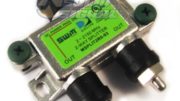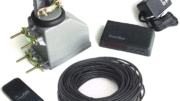The real question here isn’t “can you,” but “should you?”
An indoor antenna is an easy way for city dwellers to get free TV. However, as you get more than about 20 miles from a major city, most indoor antennas just can’t receive enough signal to give you a clear picture. Yet, because people live in apartments or don’t feel comfortable going up on the roof, indoor antennas are popular even out in “the sticks.” Sure they don’t receive channels well, but sometimes that’s better than nothing.
I was recently asked by a customer about this:
I live 35 miles from the towers but can’t put an antenna up. It’s a homeowners’ association thing. I know I could fight them but I’m not going to. Can’t I just put together a bunch of different small antennas within the house? Wouldn’t that work just as well?
Combining indoor antennas
There are some problems combining indoor antennas. I would advise people not to do it if possible. Let’s take a look at the challenges
Low gain/high noise
Indoor antennas tend to have relatively low gain compared to outdoor antennas. That’s the reason they don’t perform as well. At the same time, really cheap indoor antennas use low-quality components that add a lot of noise. Trying to combine antennas of this sort means adding more cables and parts. With the small amount of gain, you could be making the signal worse by adding cables and a combiner.
Beam width problems
Flat antennas are great because they have a really wide beam width. In other words they can get signals from many different directions. This is great but if you try to combine antennas, you will need to be really careful to make sure the antennas don’t interfere with each other.
Any time you combine antennas it’s very important to use cables that are exactly the same length and use the same connectors. This will help avoid “phasing” which is when the signals from two antennas get to the combiner at two different times and cancel each other out. Avoiding phasing problems is hard when both antennas receive signals from so many directions.
And it’s just not going to look tidy
Let’s face facts, not everyone likes to decorate in Early American DIY Wiring. Let’s say you created a massive array of flat antennas that used 16 antennas and combined them all. You’d need a lot of extra cable to make sure all the lengths were the same. Then, you’d need large combiners and an amplifier.
That may be something you want to look at, but is it really something everyone in your house wants to tolerate? I’d be it isn’t.
A better solution

It makes a lot more sense to use a mid-sized outdoor antenna but mount it on a wall or put it on a table. A lot of our Antop antennas are designed to work just as well indoors as they do outdoors. Many of them even have stands so they can be used on a bookshelf.
This is a much better solution than trying to combine small indoor antennas and really, the cost difference isn’t going to be that much.
As a general rule, you can put any outdoor antenna inside if you want, although some of the bigger ones might be a bit of a challenge. However, since most antennas work just the same upside down, you could hang a large antenna from the ceiling if you were feeling bold.





